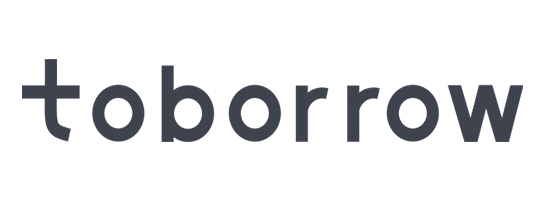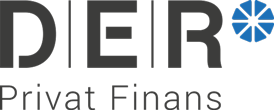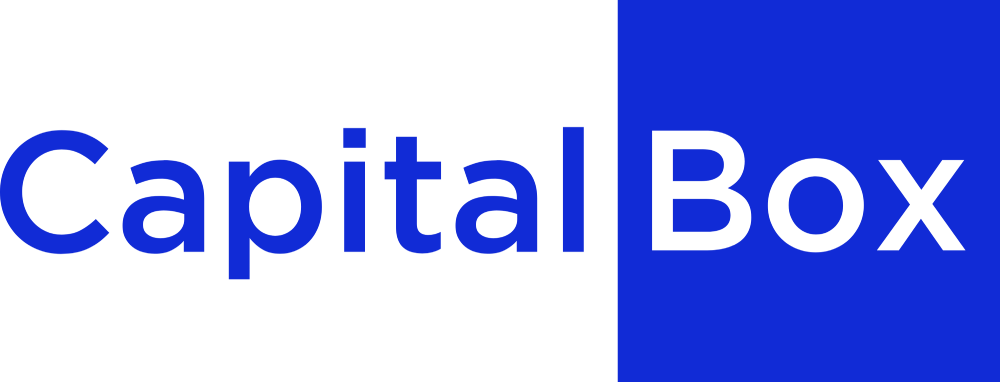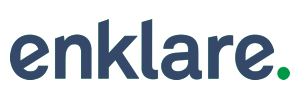Best Loans Without Collateral in Scandinavia
Compare the best loans without collateral in the Nordics. We help you find all types of financial solutions for your business or any other type of financial aid that you may required. Compare the best market options for an loans without collateral or apply now and get your answer within 48 hours.
Apply Now
Compare Loans Without Collateral
Filter

Toborrow Company Loans Review
4.6/5
Loan Amount
1500 € – 2000000 €
Interest Rates
5.95% – 29.5%
Repayment Period
2YR – 20YR

D:E:R Finance Review
4/5
Loan Amount
1340 € – 20105 €
Interest Rates
18.58% – 20.98%
Repayment Period
2YR – 8.5YR

CapitaBox Review
4.3/5
Loan Amount
2000 € – 350200 €
Interest Rates
2.5% – 30%
Repayment Period
1YR – 15YR

Enklare Review
4.5/5
Loan Amount
1000 € – 600000 €
Interest Rates
3.56% – 29.87%
Repayment Period
1YR – 16YR
Borrowing money costs money!
If you cannot repay your debt in time, you are in the risk of receiving a record of non-payment. Having a record of non-payment means that you could experience difficulties to rent an accommodation, take out a subscription or being granted new credits. For support, please contact a Budget and Debt Advisor in your municipality. You can find contact details at konsumentverket.se.
Unveiling Loans with and without Collateral: A Nordic Overview
Over the last decade, the landscape of lending in Scandinavia has undergone significant changes. Despite having a reputation for stringent loan policies, the region has seen an emergence of both collateral-based and non-collateral loans as popular financial solutions for a diverse clientele ranging from individuals, small businesses to large corporations. The demand for loans with collateral in Scandinavia has been driven by customers who view it as a secured method to achieve their financial objectives. This is particularly true for businesses seeking large-scale investments, where the risk associated with loan default is often mitigated with some form of collateral.
Though the emphasis has widely been on collateral-based loans, the appeal of unsecured loans cannot be overlooked in the Nordic market. It is worth mentioning here, that taking an unsecured loan does not require any form of collateral and hence, represents a low-risk financial solution for borrowers. These types of loans are predominantly favored by individuals and small businesses who prioritize flexibility and quick access to funds without the need to pledge any assets. It’s essential for potential borrowers to consider related financial data and studies as the nature of these loans varies widely based on individual financial needs and the policies of the lending institution.
Pros and Cons: Secured vs. Unsecured Loans in Scandinavia
In the Nordic countries, unsecured loans have grown in popularity for their several advantages. Predominantly, borrowers appreciate the quick disbursement process, given that no asset valuation is required. This feature allows access to funds in a swift and straightforward manner, particularly useful in cases of urgent financial need. Another merit of unsecured loans in this region is their non-requirement of collateral, eliminating the risk of property or valuable asset loss. Scandinavians with a stable income but lacking in high-value tangible assets often opt for this loan type. On the flip side, as per the statistics from the Nordic Financial Supervisory Authority, unsecured loans in the Nordic region have higher default rates, possibly due to lenient eligibility criteria, highlighting a consequential downside of this loan variety.
Exploring the contrasting landscape of secured loans in Scandinavia, the situational benefits are evident. A salient advantage docking at the shores of secured loans is the flexibility of borrowing a larger sum with longer repayment periods. Further, the interest rates are often more competitive, a boon to those with strong collateral but desiring a lower cost of borrowing. However, they are not void of detriments; the inclusion of collateral inherently involves a high-risk quotient. Failure to meet repayment terms could lead to repossession of collateral, an eventuality that may lead to financial destitution. Additionally, the processing times can be longer as it involves asset valuation. Hence, secured loans may not be the solution for a quick financial fix.
Eligibility Criteria for Secured and Unsecured Loans in the Nordics
In the Nordic world of finance, eligibility criteria for different loan types can vary significantly across regions, even amongst countries with similar economic structures like Sweden and Denmark. In the particular context of Secured Loans Sweden has prescribed very stringent norms. Often, these types of loans necessitate tangible assets as collateral, such as a car, boat, or house. According to statistics, a considerable number of Swedes focus their investments on real estate, thus meeting the critical criteria to readily access these loans. Yet, despite the security these loans offer to lenders, they strictly reserve approval for applicants with a solid credit history and stable income, thus reducing the likelihood of default.
On the other hand, unsecured loans have their own unique set of eligibility factors. Such loans, not requiring an asset as a safety net, rely heavily on the borrower’s ability to repay. Consequently, lenders take a hard look at the applicant’s creditworthiness, financial status, and job security. Interestingly, a research study conducted on Nordic unsecured loans indicated a higher rate of application approvals for people in stable employment sectors, reflecting the importance of consistent earnings. Consolidating these factors, it becomes evident that while secured loans capitalise on collateral, unsecured loans focus on an individual’s financial stability.
Comparative Analysis: Interest Rates Across Nordic Banks
Nordic banks have varying positions when it comes to the avenue of no collateral loans, each with distinctive lending strategies and risk considerations. For instance, when it comes to No Collateral Loans in Norway, the banking institutions trend towards a conservative approach due to heightened risk factors associated with unsecured lending. As per industry reports, this cautionary approach can result in stringent eligibility criteria translating into selectivity in the approval process.
A detailed examination of industry trends reveals that the driving factor for this selectivity in No Collateral Loans in Norway is the default risk. Due to the absence of guaranteeing assets, banks are cautious to maintain a balance between their lending portfolios and potential risks. Nordic countries, known for their robust credit systems, demonstrate uniquely tailored strategies across the region. It is integral for potential borrowers to be savvy about these variances, which influence the overall lending environment and the access to different loan types.
How to Apply for Loans with and without Collateral in Scandinavia
Applying for loans in the Scandinavian region, whether secured or unsecured, follows a uniform procedural approach. Borrowers are required to provide certain financial and personal data, with an additional necessity of collateral in the case of secured loans. With Denmark’s model serving as a benchmark in the region, research suggests that the popularity of collateral-free finance options, denoted as “Denmark Loans without Collateral” is rapidly gaining traction, mainly amongst SMEs. This trend stems from the undeniable appeal of reduced risk and liability, which outweighs the marginally higher interest rates typically associated with these loans.
The digital metamorphosis of Nordic banking has also had a visible impact on loan application procedures. Now borrowers can apply for loans in any Scandinavian country from the comfort of their homes through mobile banking and web portals, which offer intuitive application interfaces. The digital loan application reviewal turnaround times have been recorded to be up to 50% shorter than traditional, in-person applications. For instance, Denmark’s unsecured loans can be received in the borrower’s account within 24 hours post approval. This proves that Nordic countries are revolutionizing financial systems not just by increasing accessibility but also by drastically reducing waiting times.
Understanding Loan Terms: Repayment Plans and Duration
One of the essential factors to consider while examining Nordic loan options is understanding the terms, particularly focusing on the repayment plans and durations. Repayment plans can significantly impact the overall cost of the loan and the borrower’s financial stability during the repayment period. A majority of Nordic banks demonstrate flexibility in their repayment schedules, which often range between 1 to 7 years for unsecured loans and up to 30 years for secured loans, typically mortgages. These flexible timelines have been pivotal in accommodating the financial capacities of borrowers, thereby minimizing default rates.
Moreover, Nordic banks offer different repayment plan structures with varying degrees of flexibility that cater to the diverse needs of the borrowers. For instance, some plans enable interest-only payments for a certain period, while others offer equal installments throughout the loan term. The way these repayment options are structured can significantly influence borrowers’ choice of loan. A study conducted by the National Institute for Consumer Research in Norway highlighted that almost 60% of consumers prefer a repayment structure that allows them to maintain steady monthly payments, while around 35% prefer plans with room for adjustment based on their financial situation over the loan term. This underscores the importance of understanding loan terms, as the compatibility of repayment plans to individual financial situations directly affects the success of the loan repayment process.
Top Nordic Banks for Secured and Unsecured Loans
In Scandinavia, the landscape of banking and finance paints a dynamic picture with a wide range of institutions providing a variety of loan options, both secured (collateral-based) and unsecured. One such institution taking the lead in providing both types of loans is Nordea Bank, recognized for its robust online platform which facilitates easy loan application process. Ranked high for customer satisfaction based on recent data, Nordea has proven to be an excellent option for businesses and individuals seeking financing in the form of secured and unsecured loans.
Another noteworthy institution in Scandinavia is Danske Bank, highly applauded for its dedication towards creating tailored solutions to suit borrowers’ distinct financial needs. This bank’s loan offerings stretch across both collateral and non-collateral categories, allowing applicants to select the most suitable type based on their requirements and capabilities. Danske Bank’s innovative utilization of digital tools in the loan application process provides a seamless, user-friendly experience, adding to its reputation as one of the top banks in the Nordic region for secured and unsecured loans. Recent financial trend analysis highlights the bank’s significant role in the Nordic loan landscape.
Challenges in Acquiring Loans: Secured vs. Unsecured
In the Nordic region, acquiring both secured and unsecured loans poses its unique set of challenges. For secured loans, banks require assets that can cover the loan amount in case of default. The process of evaluating and assessing these assets can be time-consuming and arduous. Furthermore, borrowers face the risk of losing these assets if unforeseen circumstances prevent timely repayment. This hurdle can discourage potential loan seekers, despite the typically lower interest rates and longer repayment periods offered with secured loans.
On the other hand, unsecured loans do not require any collateral, which seems advantageous at first glance. But such loans come with their set of obstacles. Stringent credit checks, the necessity of an excellent credit score, and higher interest rates often characterize unsecured loans, making them a tougher option for those with less-than-perfect credit scores. However, research paints a promising picture with instances of unsecured loan success in Scandinavia. For instance, small and medium enterprises have been flourishing with the aid of unsecured loans. These businesses leverage their strong creditworthiness to acquire funds, promptly repaying their loan, and thus, contributing to the local economy. Yet, potential borrowers must weigh these challenges against their financial capability and credit standing before deciding on the loan type that best suits their situation.
Success Stories: How Businesses Thrived with the Right Loan Type
Venturing through the expanses of the Nordic business landscape, myriad companies have tunneled their road to success utilizing the leverage of Secured Business Loans. A standout instance is of a budding Finnish tech-startup, which in its initial phase, leveraged the security of its tangible assets to obtain a secured business loan. Consequently, the acquired funding bolstered the company’s exploration into untapped technological frontiers, marking an impressive 300% rise in revenue within the first three years of operation.
Similarly, a comprehensive study of small to medium enterprises (SMEs) across the Nordic region revealed a positive correlation between the deployment of secured business loans and accelerated business growth. Specifically, around 40% of SMEs in the region witness a significant uptick in their operating capabilities and financial stability after resorting to secured business loans. The survey emphasized the crucial importance of leveraging available assets, showcasing how it provides access to substantial financial resources while mitigating the risk exposure of lending institutions. This combination arguably paves the way for promising growth prospects and uncapped potential for businesses within the Nordic territories.
